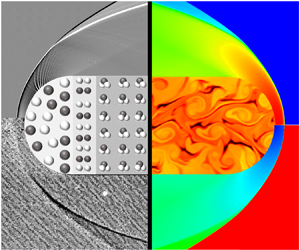Published online by Cambridge University Press: 19 November 2024

In this paper, curved detonation equations with gradients for the pre-wave and post-wave are constructed followed by analysis, verification and applications. The study focuses on shock induced chemical reaction such as detonation, with the energy effect for the main attention. Equations consider both planar and transverse curvature to accommodate both planar and axisymmetric flow problems. Influence coefficients are derived and used to analyse the effect of energy and curvature on the post-wave gradient. Good agreement with the simulation results demonstrates that the equations presented in this paper can calculate various post-wave gradients accurately. After verification, the equations can be applied to applications, including not only solution and analysis but also in the inverse design. First, the method can be applied with polar analysis to provide a new perspective and higher order parameters for the study of detonation. Second, the equations can be used for the capture of detonation waves, where both planar and axisymmetric examples show better performance. Furthermore, the equations can be used in the inverse design of detonation waves in combination with the method of characteristics, which is one of the unique benefits of the present equations.